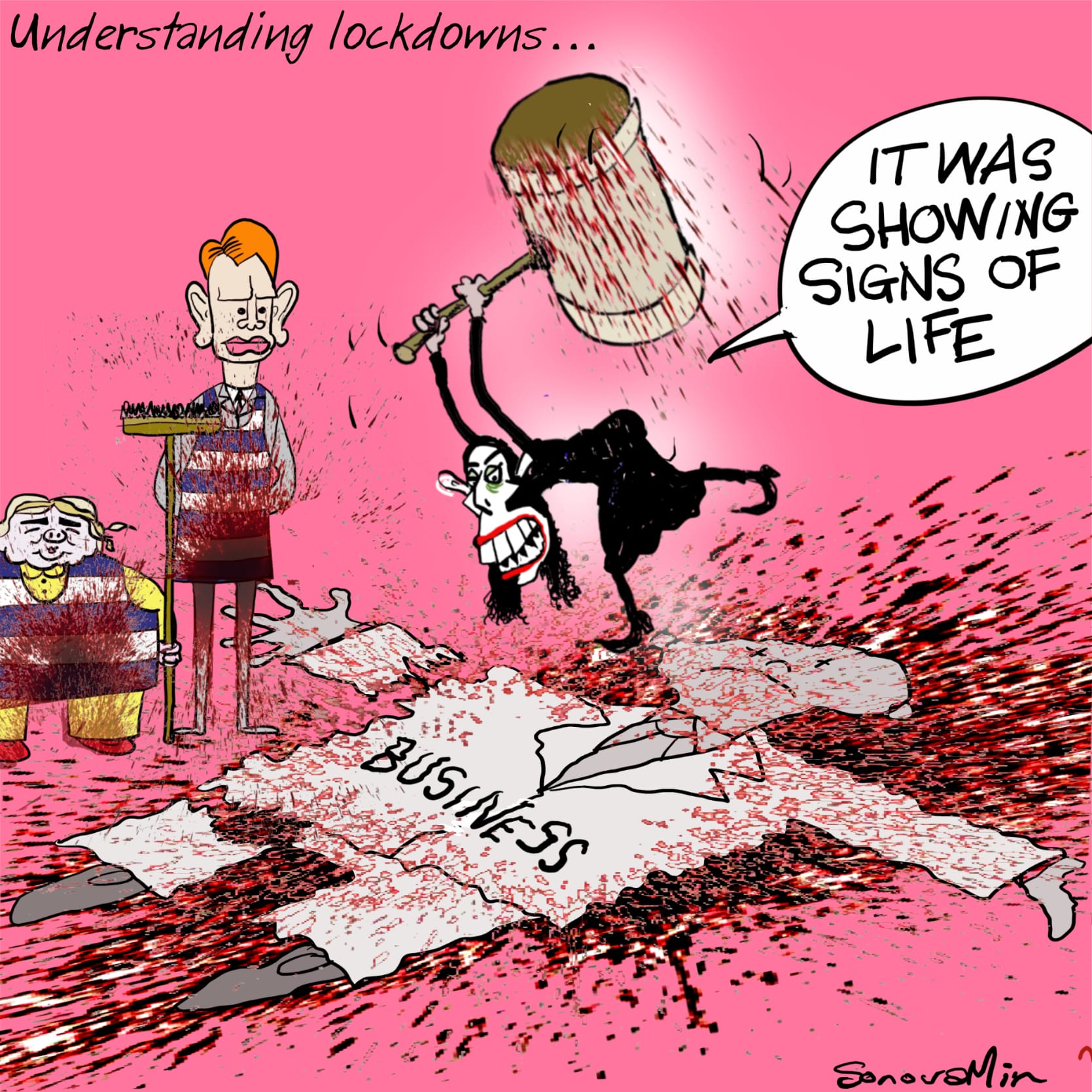Table of Contents
“Sorry, kids – Santa’s in MIQ” – parents better start rehearsing their excuses for what is shaping up to be a bit of a Christmas fizzer.
Like much of the rest of the world, too many New Zealanders, most notably their government, have laboured under the delusion that they could “freeze” the economy with no consequences. Perhaps it’s not surprising that politicians who’ve never run a business, let alone held a job outside politics, imagined that they could just flick a big ol’ government switch and turn the economy on and off – but people who work for a living ought to have known better.
They thought they’d got away with it, too, after New Zealand’s first lockdown. The government doled out a lot of other people’s money and house prices kept skyrocketing. All everyone had to do was stay home and eat KFC while they watched Jacinda Ardern’s daily press conferences. Sweet deal, bro.
But you can only spend other people’s money for so long. That shadow gathering over New Zealand is the pall cast by flocks of chickens suddenly realising that they can’t fly and are about to hit the hard ground of reality with an almighty thump.
“Don’t be surprised, if you get the same Christmas presents as everybody else,” says Kiwibank economist Mary Jo Vergara.
She says global supply chain pain means shoppers may face a more limited selection when Christmas shopping this year.
“There’s clearly no lack of demand in the economy. But the ongoing disruptions to global supply chains questions whether there is sufficient supply to meet demand,” Vergara says.
“With NZ sitting at the edge of the earth, shipping routes are being severed.”
New Zealand may sit at the edge of the earth, a fact which explains much of Ardern’s supposed Covid management, but it’s as affected by global economic factors as anywhere else. The more so, in fact, because it’s at the edge of the world. As the global economy grinds down under two years of Covid panic, peripheral markets like New Zealand are going to among the first to be sloughed off.
Vergara says: “Several media report international shipping companies abandoning the relatively remote and marginal trans-Tasman routes in favour of profitable routes between China, Europe and the US.”
That appeared to be feeding through into more limited choice in stores.
“Anecdotally, we’ve heard of retailers limiting their stock to just a handful of brands, and holding on to more inventory than usual,” Vergara says.
“The business model has shifted from ‘Just in Time’ to ‘Just in Case’,” Vergara says.
Bigger markets than New Zealand are already feeling the pinch of Covid policies merging in a perfect storm with other fashionable delusions such as “net zero emissions”. Britain is running out of fuel. Americans are facing shortages of everything from fresh foods to gasoline, which will only be exacerbated as transport infrastructure is crippled by mass walkouts over vaccine mandates. China’s planned economy is rationing electricity, leading to rolling blackouts.
But the biggest culprit in New Zealand’s economic downturn is Jacinda Ardern.
The economy has taken a knock from the latest waves of restrictions imposed by the Government in a bid to stamp out Delta.
Service sector companies have been struggling, especially in Auckland, which is the front-line in the dying days of the Government’s elimination strategy.
Total Kiwibank credit and debit card spend was down almost 8 per cent in August, Vergara said.
While this is a lower drop in spending than during the last lockdown, partly because businesses and consumers have learned from the last lockdown (unlike the clueless Ardern Government), however that cuts both ways: spending is recovering far more slowly.
The government’s gormless dithering is only making it worse. The clear-as-mud “roadmap” is hardly convincing anyone to get back out there and spend up. Especially when “easing” of restrictions is nothing more than a PR fairy-tale.
“A recovery in retail requires more lenient restrictions,” Vergara says.
“Spend on services recorded a meaningful lift once contactless service was allowed. But many retailers are still unable to open due to the limitations on people gatherings.”
“Level 3 isn’t just ‘level 4 with takeaways’ but ‘Level 4 with takeaways and Mitre 10’,” Vergara says.
Stuff
Last year’s recovery from lockdown is looking more like a fragile illusion. The latest round of lockdowns has blown it rudely away. Economists expect a 7% fall in GDP in the current quarter. Optimistically, they’re calling it a “short, sharp fall”. Sharp it may be, but only time will tell if it’s going to be short – especially while Ardern keeps grinding the boot heel of lockdowns on New Zealand’s neck.

Please share this article so that others can discover The BFD









